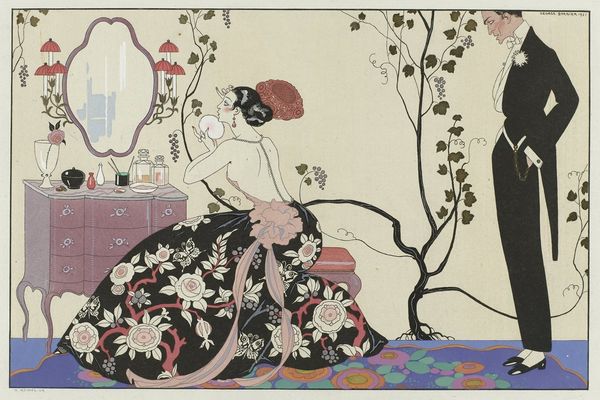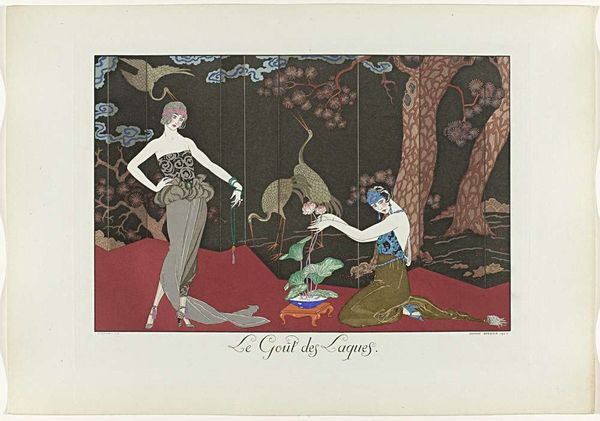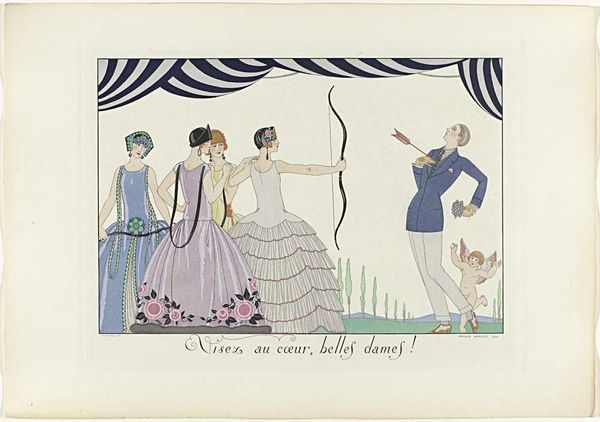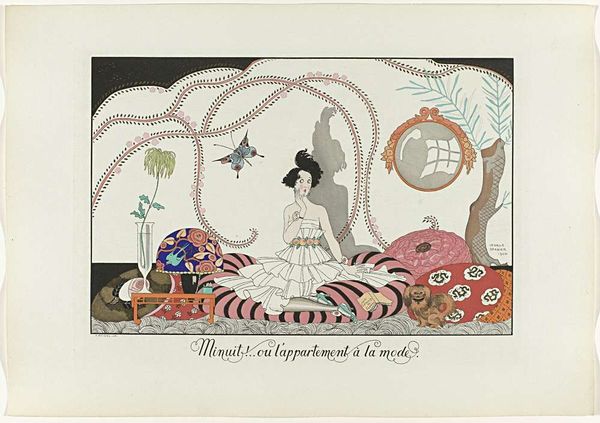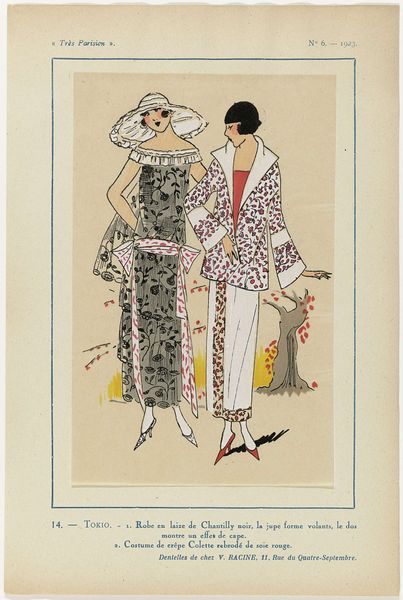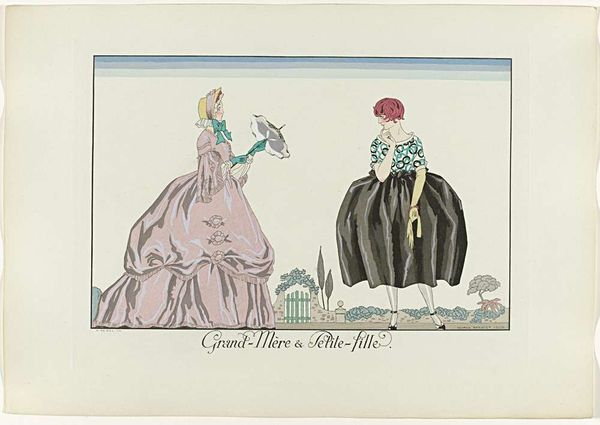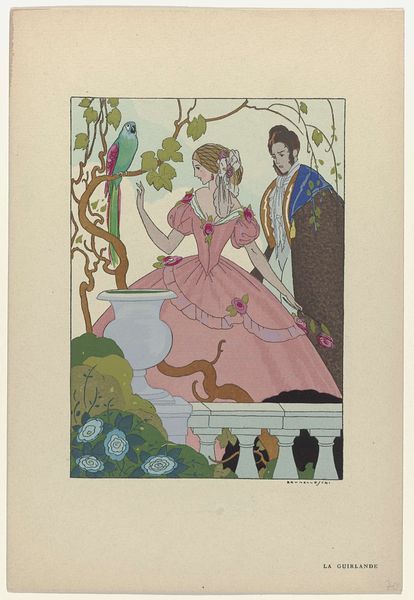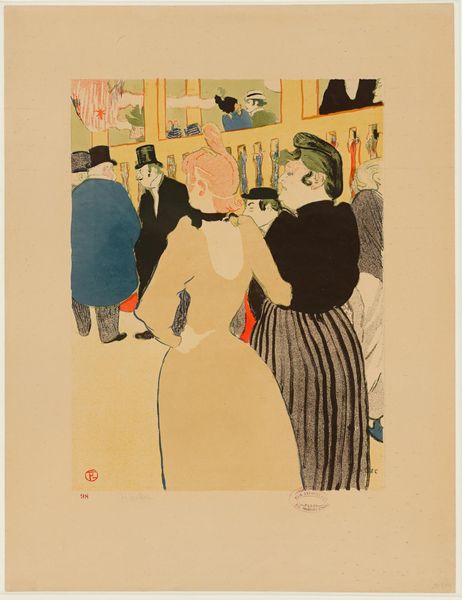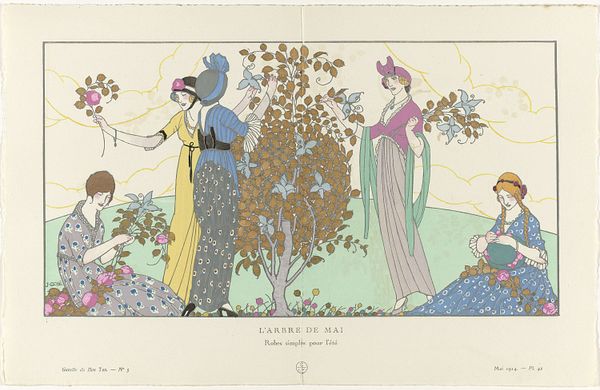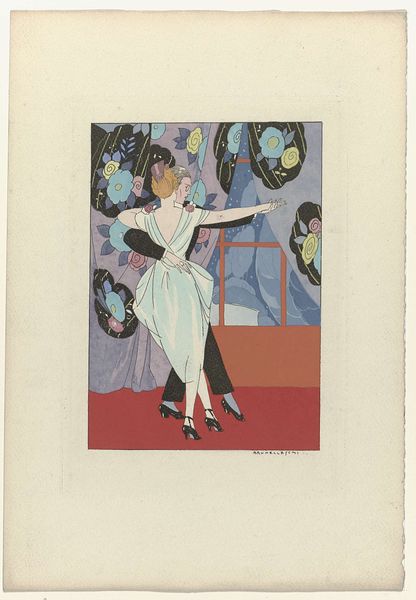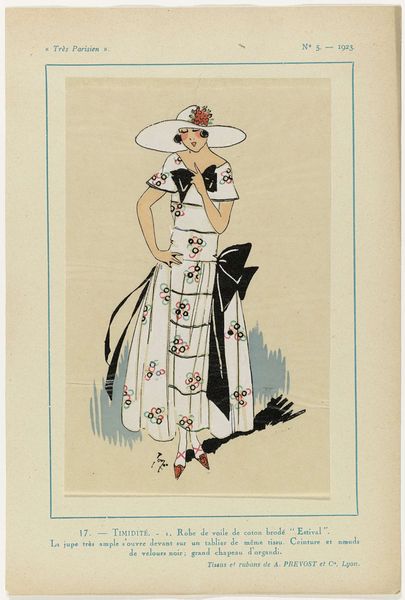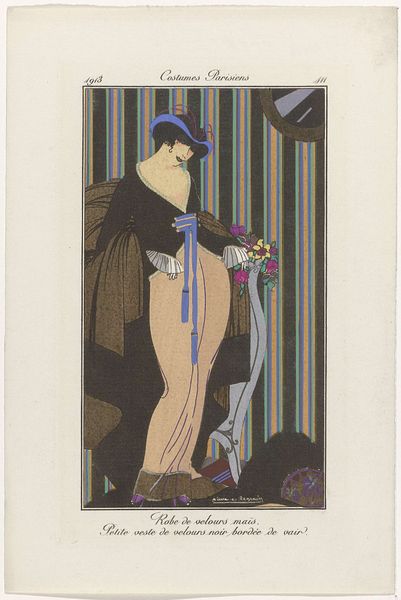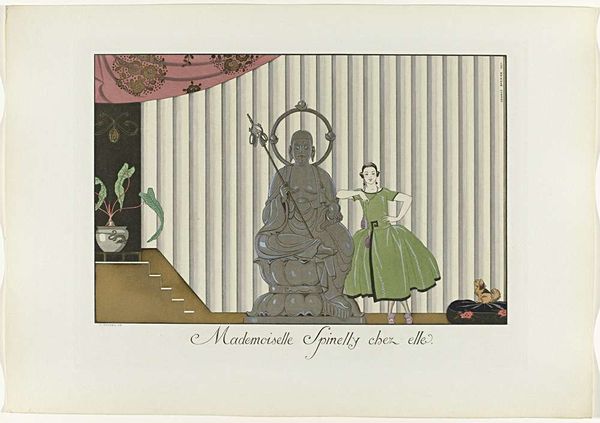
Dimensions: height 310 mm, width 448 mm
Copyright: Rijks Museum: Open Domain
Curator: Welcome! Today, we are looking at "Joie de vivre: Le Bonheur du Jour ou Les Graces à la Mode," or "Joy of Living: The Delight of the Day, or the Fashionable Graces," a watercolour drawing by Henri Reidel, dating to 1921. Editor: It's arresting, isn't it? That black gown, a canvas of blooming roses, makes the image pop. There's such contrast between the gown and the sharp lines of the man’s formal wear. Curator: Indeed. The work really reflects the fashion of the period. Art Nouveau lines intertwine with Intimism, depicting private scenes of everyday life in elegant settings. Editor: Those are not everyday materials though! Look at that silk ribbon wrapped around the gown. Reidel's chosen materials elevate the depiction, contrasting with the ordinary act of the woman powdering her face. And he signed it, ensuring that the maker's contribution would be recognized. Curator: Absolutely. Reidel here illustrates a modern interpretation of classical grace through a 1920s lens. The "Graces," goddesses of charm, beauty, and creativity, have been reimagined as fashion icons, highlighting the social importance placed on appearance during the interwar era. Editor: You see a different interpretation of labor too: The male figure is clearly affluent and idle, almost decorative, in contrast with the unseen workers producing his bespoke tailoring and the silk dress of the woman who, regardless of her social class, spends time enhancing her look for public display. Curator: An interesting point about production and its representation. What do you think of the male figure’s positioning on the side? Does he highlight societal expectations of masculine presence? Editor: Perhaps he signifies that expectation, even as he's distanced. Notice how his formal wear renders him almost like an observer, an arbiter of her beauty—or the luxury she wears. He's a visual indicator of power. Curator: I appreciate how your materialist analysis uncovers layers within Reidel’s scene of "Joie de Vivre", moving beyond mere aesthetic pleasure to expose the complex dynamics of labor, material culture, and the socio-political values embedded in an seemingly innocent tableau. Editor: And I respect how you've contextualized the social and historical weight embedded in seemingly "light" depictions. Ultimately, this illustration invites us to explore the subtle but ever-present undercurrents shaping society and ourselves.
Comments
rijksmuseum over 2 years ago
⋮
Luxuriously produced fashion series by artists immerse the reader in a world of exotic colours and joie de vivre. George Barbier writes in the introduction of Le Bonheur du Jour that everything in his album delights the eye: extravagant clothing, feather fans, amorous entangle-ments, and pleasant diversion.
Join the conversation
Join millions of artists and users on Artera today and experience the ultimate creative platform.
